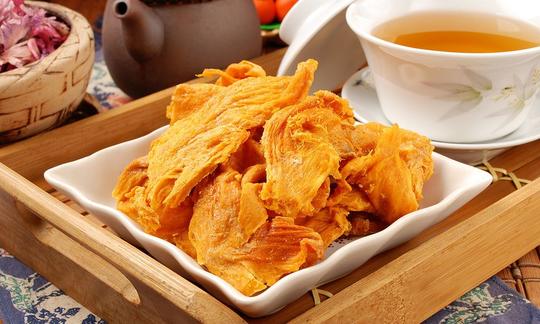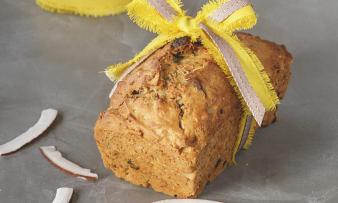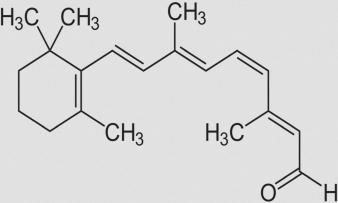Table of contents
Dried mango ( raw? ) contains the nutrients of the fresh mango fruit ( Mangifera indica) in concentrated form and is suitable as a sweet and healthy snack ( organic? ) between meals. The industry usually adds granulated sugar and sulphur dioxide (for additional shelf life) to the dried mangos.
Dried mango - Use in the kitchen:
Dried mango is exotic, sweet and aromatic in taste. Thanks to their concentrated nutrient and energy density, dried mango strips are suitable as a vegan snack and an ideal source of energy for breaks or during sporting activities.
What do you do with dried mangos? Dried mangos can be used in many ways when cooking and baking. For example, they go well in all kinds of curries, vegan rice dishes, poke bowls, salads, chutneys, fruit salads and other fruity desserts. The sweet fruit is also suitable for baked goods with dried fruit, muesli (e.g. vegan pea muesli without gluten) or muesli bars. If you soak the dried mango in water for two hours and then puree it, you can make a delicious smoothie or juice (mango juice). The dried mango can also be used as a crunchy alternative to chips. You can find many other recipes on the internet (see: Dried Mango Recipe).
Vegan recipe for mango pineapple fruit bars:
Ingredients (for 3 people): 50 g dried mango strips (organic, not sulphured), 50 g dried pineapple pieces, 2 rectangular baking wafers, 25 g raw almonds (healthier: walnuts and/or macadamia nuts ), 1 tbsp water .
Preparation: Grind the nuts with a mixer or hand blender until you have a smooth nut puree. Add dried mango strips and pineapple pieces and chop finely. Add water to the nut and fruit mixture and puree the mixture. Use a spoon to spread the puree onto the first baking sheet right up to the edges. Place the second wafer on the mixture and press down firmly. Cut the filled baking sheet into six bars. Enjoy the sweet fruit bars (vegan) as a snack when you're a little hungry.
Vegan recipes with dried mango can be found under the note: " Recipes that have the most of this ingredient ".
| Not only vegans or vegetarians should read this: Vegans often eat unhealthily. Avoidable nutritional mistakes . |
Shopping - where to buy dried mango?
Dried mango (raw) is available all year round in supermarkets such as Coop , Migros , Spar , Lidl , Rewe , Edeka . Other supermarkets offer dried mango as part of a special offer (e.g. Aldi , Hofer , Volg ) or rarely or never have these dried fruits in their range (e.g. Denner ). Dried mango in organic quality (organic) can be found mainly in organic supermarkets (e.g. Denn´s Biomarkt , Alnatura ), organic shops, health food stores and drugstores. Dried mango can also be bought in online shops, but not always in raw food quality (raw).
The conscious consumer should prefer dried mango without sugar (unsweetened), preferably untreated and unsulfured. Treatment with sulfur increases the shelf life and ensures that the color of the dried fruit is retained (good appearance). Sulfurizing the dried mango strips is not necessary, however, as unsulfured mangos last around nine months. It is also better to choose dried organic mangos, as mangos from controlled, organic cultivation (organic) contain fewer pollutants.
Making your own dried mango:
Making your own dried mango is really easy. All you need is fresh organic fruit, a sharp knife, an oven and baking paper or a dehydrator. Use ripe, but not overripe mangos.
To dry the fruit, first peel it, then cut it into thin strips (0.5 cm) and, if you don't have a dehydrator, place it on a tray lined with baking paper. The mango strips should not touch each other. The oven door should be slightly tilted so that the moisture can escape easily. The maximum temperature for drying mangos in the oven is 50 °C; in the dehydrator you can also set it to 42 °C. At higher temperatures, valuable mango nutrients are lost.
How long do you have to dry a mango? The drying time the fruit needs depends on the temperature, the thickness of the mango strips and the desired degree of dryness: In the dehydrator, a mango drying time of 10-12 hours can be expected at 50 °C, 1 raw quality (42 °C) needs longer.
Storage:
Dried mangos are best stored in a cool, dry place protected from light in an airtight container. Temperatures between 7 and 10 °C are ideal. Do not store these dried fruits in the refrigerator, as the humidity is too high there. Warm temperatures and high humidity can lead to mold, pest infestation and premature rancidity. If the dried mango is treated with sulfur dioxide, it will last for up to two years. Unsulfured fruits can last for up to 9 months.
Mango: Ingredients - Nutritional values - Calories
Dried mango contains 289 kcal per 100 g, which mainly come from carbohydrates (70 g/100g, of which 60 g sugar). 100 g of dried mango cover 66.6% of the daily sugar requirement. The high sugar content of mango is comparable to that of other dried fruits, such as dried pears (62 g/100g), raisins (59 g/100g), dried apples (57 g/100g). The protein content of 2.9 g/100g and the fat content of 2.2 g/100g are low. 3
Does dried mango contain vitamins? By consuming 100 g of dried mango, you would cover 183% of your daily requirement of vitamin C (ascorbic acid) . The content of 147 mg/100g can be compared with that of wild garlic (150 mg/100g) and red chili peppers (144 mg/100g). Sea buckthorn berries contain even more vitamin C (450 mg/100g). 3
Dried mango contains 142 µg/100g of folate (folic acid) , which would cover 71% of the daily requirement. Endive (142 µg/100g) and kale (141 µg/100g) contain a similar amount. Mung beans contain a lot of folate (625 µg/100g). 3
Dried mango has 425 µg of vitamin A as RAE per 100 g. Raw goji berries (445 µg/100g) and pumpkin (426 µg/100g) have comparable amounts. Dried goji berries have a significantly higher vitamin A content of 1341 µg/100g. 3
The complete ingredients of Mango, dried, the coverage of the daily requirement and comparison values with other ingredients can be found in our nutrient tables. In the article Nutrients explained you will get a detailed insight into the topic.
Health aspects - effects:
Is dried mango healthy? Dried mango is vegan and rich in vitamins and minerals, but has a high fructose content. Only some of the water-soluble vitamin C is lost during drying. The question of whether dried mango is healthy can therefore be answered with yes, but only when consumed in moderation . 15 Our recommendation: Enjoy dried fruit in small quantities, e.g. combined with walnuts, and prefer fresh fruit.
Mangos contain a lot of vitamin A. They also provide 16 different carotenoids (plant pigments), especially beta-carotene, which the body converts into vitamin A. Carotenoids act as antioxidants. They neutralize free radicals that can lead to cancer, diabetes and premature aging processes. 16 Vitamin A ensures the maintenance of epithelial tissue, the top cell layer of the skin and mucous membranes. Vitamin A also improves vision and strengthens the immune system. Eating mangos can have positive effects on dry skin, premature skin aging or skin diseases such as eczema and dermatoses. The mango fruit can also help with retinal diseases or changes (night blindness, optic nerve atrophy and thrombosis of the central retinal artery). 9 The polyphenolic antioxidant mangiferin is also contained in mangos. It has strong antioxidant, immunomodulatory, cardiotonic, antihypertensive, wound healing, antidegenerative and antidiabetic abilities. 10
The vitamin E contained in the tropical fruit also acts as an antioxidant. Vitamin C is also contained in large quantities in the dried fruit. Among other things, the vitamin stimulates the formation of collagen and thus ensures a smooth, even complexion. The combination of vitamins A, E and C prevents the oxidation of the lipoproteins that transport cholesterol molecules and ensures that cholesterol transport in the blood remains effective and there are no cholesterol deposits in the arteries. The risk of arteriosclerosis is thus minimized. 11
Folic acid is present in high amounts in mangoes. The fruit is therefore good for pregnant women, as folic acid is important for the development of the fetus. 12 The macronutrient potassium contained in dried mangoes has a diuretic effect and helps regulate blood pressure. 15
Dangers - Intolerances - Side effects:
Is mango healthy or unhealthy? Dried mango contains many healthy ingredients. However, the mango fructose content and the calorie content are very high. These dried fruits should be consumed in moderation due to the high mango fructose content. 15
As with other fruits, this also contains fructose, so people with fructose malabsorption should avoid eating dried mangoes. In fructose malabsorption, the function of the fructose transport molecule is impaired, meaning that the intestinal cells cannot absorb enough of the fruit sugar (fructose). If consumed, dried mangoes can cause diarrhea, abdominal cramps, constipation, nausea, malaise, belching and flatulence. The amount of fructose that a person can tolerate varies from person to person. 13
People who are sensitive or allergic to sulfur dioxide should always choose unsulfured dried mango fruits.
Folk medicine - natural medicine:
What is mango good for? In traditional Chinese medicine ( TCM ), the mango fruit has a cough suppressant and diuretic effect. It can also be used to treat nausea, vomiting or motion sickness. 14 The fiber content also aids digestion. It is therefore possible that dried mango has a laxative effect. 2 In India, mangos are said to have the ability to stop bleeding and calm the heart.
Occurrence - origin - ecology:
The mango plant ( Mangifera indica ) is native to the low mountain ranges of Burma and the foothills of the Himalayas in eastern India. The sweet fruit has been cultivated in India for over 4000 years. 4 Today, mangos are grown in tropical and subtropical regions all over the world. Although India is still the main exporter of the sweet fruit, mangos are also grown in China, Thailand, Pakistan, Southeast Asia (e.g. the Philippines), Mexico, Central and South America, Nigeria, South Africa and Australia. 5 Mangos are also cultivated in Europe, on the Costa del Sol and in the Canary Islands. 6
Cultivation - Harvest:
Mangos thrive best in tropical summer areas. The trees can grow up to 45 m tall, are drought-resistant and have low soil requirements. Their crowns are covered with long-stemmed mangos. After five years at the latest, the mango trees bear their first fruit, and it takes 12 to 15 years for them to fully ripen. There are over 1000 different types of mango, which differ in their shape, size, texture, taste and climate requirements. 8
Ecological aspects:
When buying dried mangos, choose organic products (organic), as chemicals and pesticides are used in conventional cultivation. The working conditions on conventional plantations are also repeatedly criticized. Organic mangos are harvested early. They have enough time to ripen during transport and do not contain any pesticide residues. 6
The so-called "air-flighted mangos" are particularly harmful to the environment and the climate. Since they are shipped by plane during their peak ripening period, they taste wonderful but cause large amounts of greenhouse gases. Mangos that travel short distances by ship are less harmful to the climate. 6
Industrial production:
To dry, peel the ripe mango fruit and cut strips from the stone. These can be dried either in the sun or with the help of machines. In machine production, ovens gently dry the fruit using warm air. When mangoes are dried, the fruit loses its moisture, which increases the percentage of sugar. This means that dried mango pulp tastes very sweet and has a longer shelf life.
There are two types of dried mango: natural dried mango and sweetened dried mango. In contrast to sweetened dried mango, natural dried mango is made without the addition of additional sugar . Dried mango without sugar is often sulphurised to extend its shelf life and to maintain its bright yellow colour. 7
When manufacturers describe dried mangoes as "organic," they are made without the addition of sulfites (unsulfurized). 7
General information:
The mango tree ( Mangifera indica ) is classified within the sumac family (Anacardiaceae). After bananas , mangos are considered the most important tropical fruit. 4
Alternative names:
Dried mangos have the following synonyms and misspellings: dried mango, dried mangos, dried mango, dried mango strips, dried mango strips, dried mango, dried mango, dry mango, dried or dry mango, dried mango slices, dried mango pieces.
In English, the dried mango is called dried mango.
Keywords for use:
A vegetable oil, mango kernel oil, can be extracted from the seeds (kernel) of the dried fruit. Its properties are similar to those of cocoa butter. It is used primarily in the cosmetics industry in skin care creams, lotions, shampoo, soaps, sunscreen creams, lip balms and lipsticks.
Literature - Sources:









Comments